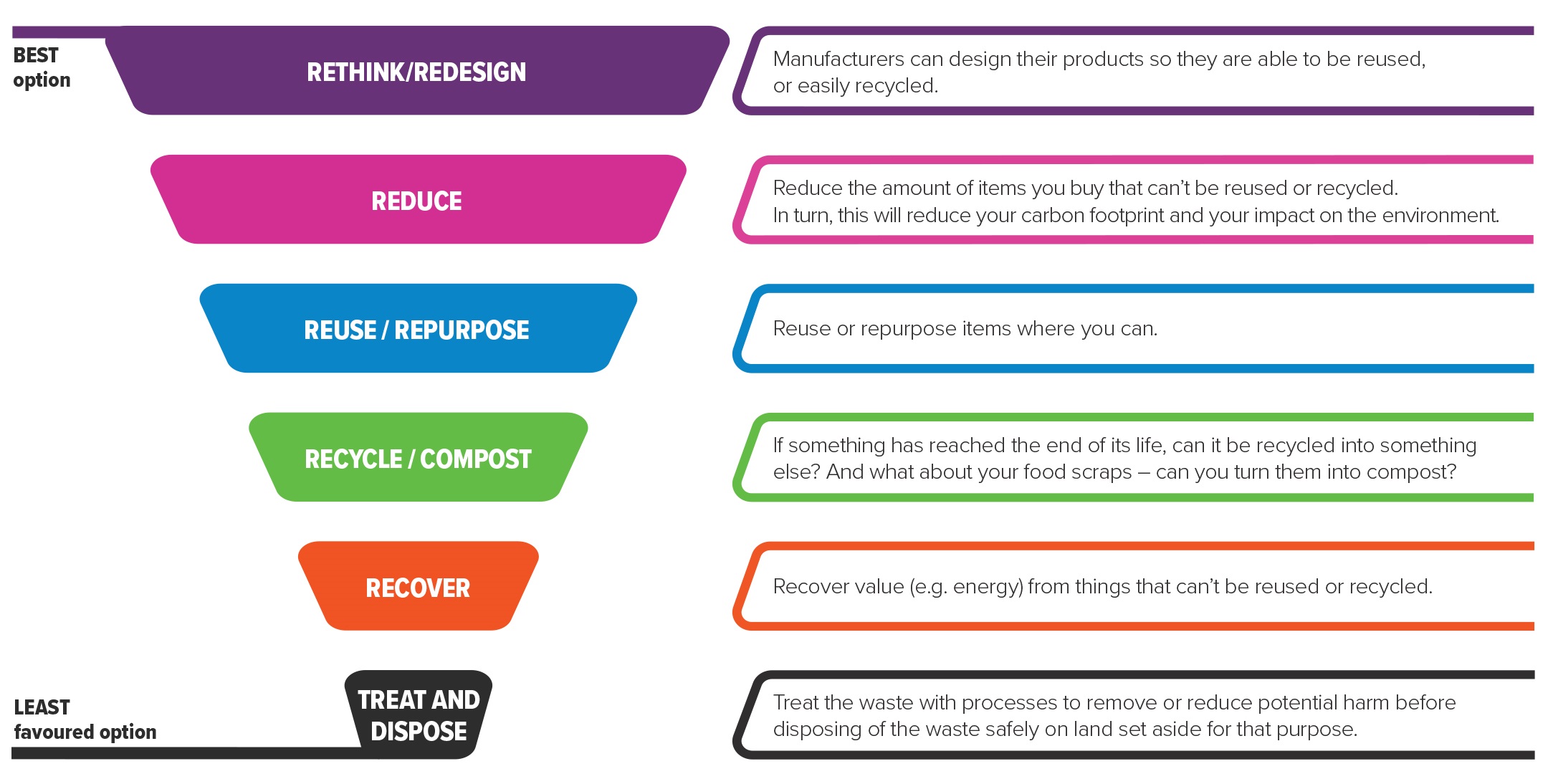Waste hierarchy
Lots of us are familiar with the message to reduce, reuse, recycle. Councils and the government also talk about the waste hierarchy. Learn about what it is and how we look at it in Palmy.

This hierarchy essentially sets our agenda for reducing waste, that landfill is the last resort. You as consumers can help with the first four steps, and then it's our job to help make it easier to do the other two.
This hierarchy is a big reason for why we introduced e-waste recycling.
A zero waste world
Over the past decade, a new term has emerged in the waste world. It's called zero waste and it means that we value all resources and waste nothing.
While this still encourages minimising waste, reducing consumption and encouraging recycling, there's also a push on industry to make products that can be reused, repaired, recycled or composted.
The Zero Waste International Alliance definition of zero waste is:
"Zero waste is a goal that is ethical, economical, efficient and visionary, to guide people in changing their lifestyles and practices to emulate sustainable natural cycles, where all discarded materials are designed to become resources for others to use.
"Zero waste means designing and managing products and processes to systematically avoid and eliminate the volume and toxicity of waste and materials, conserve and recover all resources, and not burn or bury them."
The New Zealand Zero Waste Network says implementing zero waste will eliminate all discharges to land, water or air that are a threat to planetary, human, animal or plant health.
To find out more, head to its website.